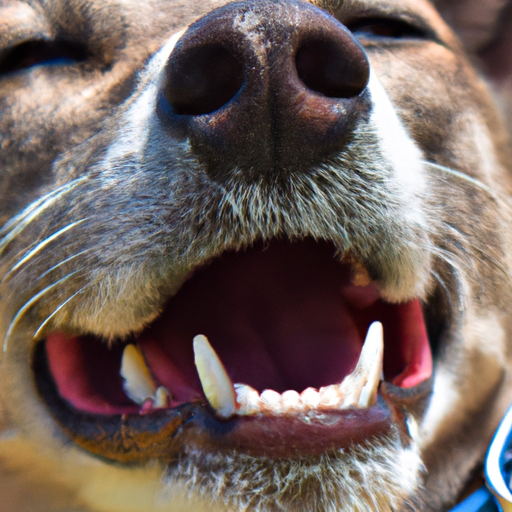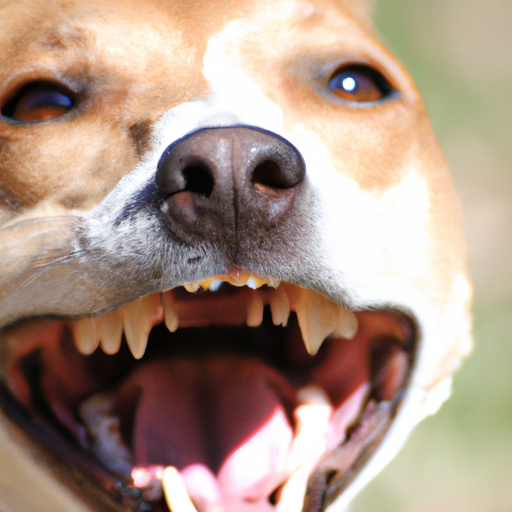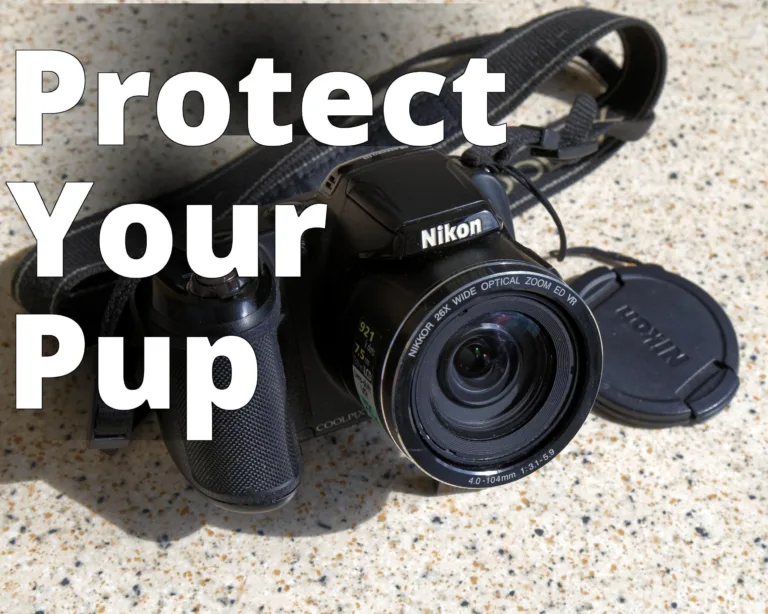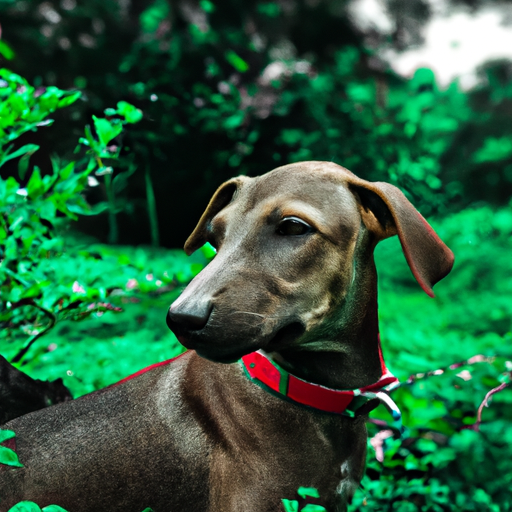How Many Teeth Do Dogs Have?
Get ready to embark on a unique journey to understand your canine companion better with our well-researched piece “How Many Teeth Do Dogs Have”. This comprehensive article touches upon an often-overlooked aspect of your dog’s health – their teeth. Understanding how many teeth dogs have, how their dental system works can significantly enhance your pet care routine. So, sit back, sip on your coffee and take your first steps towards becoming the best pet parent you can be.

Understanding a Dog’s Dental Development
As a dog owner, one of your responsibilities is to ensure that your furry friend maintains good oral health. Understanding the dental development process in dogs is crucial in helping you take better care of your pet.
Phases of dental development in dogs
Just like in humans, dogs go through several stages of dental development. The first phase involves the growth of their deciduous teeth, often known as baby teeth. The second phase is the painful teething stage, which later leads to the development and growth of adult teeth. Your dog’s dental health is important every step of the way, and understanding these phases can help prepare you for those trips to the vet.
When do dogs start teething?
Dogs usually begin the teething process at about three weeks of age. The teething stage is characterized by the loss of baby teeth and replacement by permanent ones. This process generally starts to occur when your dog is around three to four months old.
Impact of dental development on dog behaviour
Teething can be a particularly uncomfortable period for your pup, leading to changes in behavior. You might notice that your dog starts to chew excessively on different objects or foods. This is quite normal, and a way for the dog to reduce discomfort. However, it’s important to monitor your pet to ensure they’re not chewing on harmful items.
Number of Teeth in Puppy
Let’s delve deeper into a puppy’s dental development, starting with their baby teeth.
How many deciduous (baby) teeth do puppies have?
Your puppy starts off with 28 baby teeth, which are sharp and tiny. These teeth act as placeholders for their permanent teeth, and you’ll notice them showing up when your pup is about three weeks old.
When do puppies lose their baby teeth?
By the age of four to six months, your puppy should begin shedding their baby teeth and in place grow their adult teeth. It’s a natural process, so you might not even notice any loose teeth lying around.
Concerns about puppy teething
Just like young human kids, puppy teething can be quite uncomfortable and might affect your puppy’s eating habits. It’s crucial to offer them comfortable chew toys and soothe their gums during this period. Should you notice any extreme behaviors, however, it’s best to visit a vet.
Factors that can affect a puppy’s dental health
Several factors can affect your puppy’s dental health, including diet, chewing habits, and genetics. Regular check-ups can help ensure that your puppy’s dental health is on track, and address any concerns before they escalate.
Number of Teeth in Adult Dog
An adult dog’s dental health matters just as much. Let’s discuss an adult dog’s teeth further.
How many permanent/adult teeth do dogs have?
Adult dogs have 42 permanent teeth. These are more than the original baby teeth and are essential for a dog’s eating lifestyle.
When do adult teeth fully develop in dogs?
Most dogs will have a full set of adult teeth by the time they reach six to seven months of age. This timeline can vary slightly depending on the breed and individual health factors.
The different types of adult teeth in dogs
Adult dogs have four types of teeth – incisors, canines, premolars, and molars. Each type of tooth has a specific function for eating and chewing.
Factors that can affect an adult dog’s dental health
Just like with puppies, many factors can affect an adult dog’s dental health. These include diet, dental care routine, and underlying health issues. Regular dental check-ups can help in maintaining a healthy set of teeth for your dog.
Types of Dog Teeth and Their Functions
Understanding your dog’s teeth is not just about how many there are but also knowing their functionality.
Incisors and their role
Incisors are small teeth situated at the front of the mouth, used for biting, nibbling, and grooming.
Canines and their role
Canine teeth are the sharp, pointed teeth that sit either side of the incisors and are used for tearing.
Premolars and their role
Premolars are towards the back of the mouth, these teeth are handy for chopping and grinding food before swallowing.
Molars and their role
Molars are the last teeth located at the back of the mouth and are crucial for grinding food down during breakdown.

Common Dental Problems in Dogs
Dogs are susceptible to numerous dental problems. Many of these can be prevented with appropriate dental care.
Dog dental diseases and symptoms
Some of the common dental diseases in dogs include periodontal disease, gingivitis, and tooth abscesses. Symptoms may include bad breath, drooling, difficulty eating, and changes in behavior.
Factors contributing to dental issues in dogs
Undeniably, poor dental hygiene, diet, and age are primary contributors to dental problems in dogs. However, genetics and size also play a significant role.
The dangers of untreated dental diseases in dogs
Untreated dental diseases in dogs can lead to extreme discomfort, loss of appetite, and even serious health risks like heart, liver, and kidney disease.
Professional Dental Care for Dogs
The importance of professional dental care for dogs cannot be understated. It’s a critical aspect of their overall health and wellbeing.
Importance of regular dental check-ups
Regular dental check-ups ensure that any potential dental issues are caught early, preventing exacerbation of conditions down the line.
What happens at a professional dog dental cleaning?
A professional dental cleaning typically involves a thorough examination, scaling, polishing, and sometimes X-rays. This was done under anesthesia to keep your dog calm and cooperative.
How often should dogs get their teeth professionally cleaned?
The frequency of teeth cleaning depends on your dog’s dental health, diet, and home care routine. However, most vets recommend a professional cleaning at least once a year.
Home Dental Care for Dogs
Professional dental care is essential, but so is your role in your dog’s dental care at home.
Why home dental care matters?
Home dental care helps maintain your dog’s oral health between professional cleanings. It aids in preventing plaque build-up, bad breath, and dental disease.
Best ways to brush dog’s teeth
Brushing your dog’s teeth daily is best, but even a few times a week can be beneficial. Always use a toothpaste made for dogs, and choose a comfortable toothbrush that fits their mouth.
Effective dental care products for dogs
There’s an array of products available that help escalate your dog’s dental health. Dog toothpaste and toothbrush, dental sprays and wipes, and even dental diet dog food can be pertinent to add to your dog’s oral care routine.
Dog’s Nutrition and Dental Health
You cannot overlook your dog’s nutrition when it comes to their dental health. A balanced diet can go a long way in maintaining great oral health.
The role of dog’s diet in dental health
Diet plays a critical role in dental health. Foods rich in certain nutrients can help strengthen your dog’s teeth and gums, while others can cause plaque build-up and decay.
Healthy foods for dogs teeth
Foods like carrots, apples, and high-quality dog food can be excellent for your dog’s teeth. They act as natural toothbrushes, aiding in the removal of plaque.
Foods to avoid for the dog dental health
Avoid sugary and starchy foods, as these can contribute to plaque build-up. Foods that are too hard can also damage your dog’s teeth.
Dog Teeth Cleaning Toys and Tools
Toys and tools designed for dog teeth cleaning are a wonderful supplement to brushing.
Types of dog teeth cleaning toys
Dog dental toys come in various shapes and sizes. Some are designed to clean your dog’s teeth as they chew, while others have spaces where you can add toothpaste for added cleaning effect.
How to use dog teeth cleaning tools effectively
Dental cleaning tools can range from toothbrushes and toothpaste to dental sprays. The key is to use them regularly, and in line with the product’s recommendations and your vet’s advice.
Best recommended teeth cleaning products for dogs
Some of the products recommended by vets for dog dental care include enzymatic toothpaste, dental wipes, water additives, and dental chews.
Frequently Questions About Dogs and Teeth
Understanding your dog’s dental health would make you curious about several aspects. This should address some of the common questions.
What should dogs chew for their teeth?
Chew toys designed for dental health, crunchy treats, and even certain types of food can help your dog maintain excellent oral health.
What if a dog loses a tooth?
If a dog loses a tooth, it’s important to consult with a vet. Tooth loss can be a symptom of a deeper dental or health issue.
Why is puppy teething period painful?
The process of losing baby teeth and growing permanent ones can be uncomfortable and painful. This is why puppies have the urge to chew, as it relieves some discomfort.
Signs of dental problems in dogs
Signs of dental problems in dogs include bad breath, discolored teeth, drooling, difficulty chewing, and changes in their eating habits. If you notice any of these, it’s best to consult with a vet immediately.
Regular dental care, quality nutrition, and a close eye on your furry friend’s oral health can ensure they lead a happy and healthy life.






